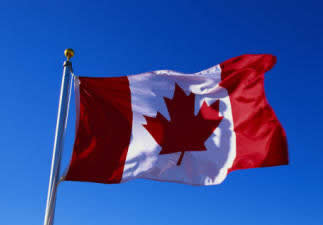Love Crater Lake? Thank an early Albany newspaper man
William Gladstone Steel, founder of the Albany Herald, fought for nearly 20 years to get iconic lake set aside as a public park; he founded the famous Mazama Club as part of that battle.
EDITOR'S NOTE: A revised, updated and expanded version of this story was published in 2016 and is recommended in preference to this older one. To read it, click here.

This image of Crater Lake comes from a postcard
that was mailed from
Medford to El Dorado, Ark.,
postmarked Dec. 19, 1945. "Dearest Aunt," it
reads. "At last I've gotten to see Crater Lake, and it's
certainly a beautiful
thing ... Love, Jimmy." This introduces a delicious mystery: Crater Lake
is
inaccessible in December! It's also not very close to
Medford. What
could Jimmy have been up to ...?
By Finn J.D. John — March 22, 2009
In Oregon, there’s one place where you’re allowed to fish for free — and you’ve got a former Albany newspaper owner to thank for that.
It’s in Oregon’s famous Crater Lake where you can wet a line without paying The Man. Yet very few people ever do, because the lake is one of the largest bodies of water in the state — not in terms of surface area, of course, but it’s so deep it holds an enormous amount of water — and the fish colony isn’t big.
It’s free because the fish aren’t actually supposed to be there. Crater Lake never had fish in it before, and that’s part of why its water is so clear and brilliantly blue.

A fancifully painted hand-tinted postcard from the 1910s. This started out
as a black-and-white photograph, and the colors were added by an
artist.
So how did the fish get there? Well, that gets back to the newspaper man. His friends called him Will Steel, but when he founded the Albany Herald in 1880, his name was listed as William Gladstone Steel. (Albany’s other paper was the Democrat, which at the time was more than just a name. Steel was firmly Republican.)
Steel was one of the most important figures in Oregon history. After being fired from his Post Office job in Portland for being a Republican (Americans had just elected Grover Cleveland, and the Dems were cleaning house), he went out to explore the state. One of his first priorities was to find the jewel-like lake he’d heard about as a boy, which none of the locals seemed to know existed.

This postcard image comes from an unmailed card
dating from the
mid-1970s, part of a series produced
by
Union Oil Co. of California, now
part of
ConocoPhillips.
When he did, he raced to Washington, D.C., and somehow convinced the president who’d canned him shortly before to block settlement in the area until he could survey it. Then he returned to Portland, hired a survey crew and had three boats built and hauled to the lake, where he floated out on the water to take soundings. This was in 1886.
Steel found he hadn’t brought enough rope. He suggested that the lake might in fact be bottomless. Finally, with more line, the crew found the deepest part — just shy of 2,000 feet.
After getting Steel’s report, Congress introduced a bill to preserve the lake and 36 square miles of the surrounding terrain as a national park — and the fight was on. There were a lot of trees on those 36 square miles, and several companies wanted to turn those trees into money.

This postcard image shows Crater
Lake's "Phantom Ship" island, which
most visitors
never get a chance to see.
Steel fought tirelessly for his park. Realizing that outdoorsmen (yes, men — remember, this was the late 1880s) could help his cause, Steel decided to stock the lake with trout. So he offered some kids in Rogue River a dime for each minnow they caught. They brought him 600. A very worried (and out-of-pocket) Steel asked them what they wanted for the lot, and they requested four bits. Relieved, Steel gave them each a buck and took the minnows 45 miles to the lake. At each stream, he stopped to freshen the water, but most of them were dead by the time he got to the lake. Still, 37 of the original 600 survived to cause the present-day problem there.
Steel also, during that time, founded the Oregon Alpine Club — a diverse outfit composed of campers and outdoorspeople of all sorts — possibly with the same idea in mind: More appreciators of nature meant more support for his lake. A few years later, he organized the state’s famous Mazama Club, open only to people who’d climbed Mount Hood.
Finally, after a 17-year fight with the timber and grazing interests in Congress, Steel saw his dream realized. In 1902, Congress officially made Crater Lake the nation’s fifth national park.
(Sources: Harmon, Rick. Crater Lake National Park: A History. Corvallis: OSU Press, 2002; Gulick, Bill. A Roadside History of Oregon. Missoula: Mountain Press, 1991; Sullivan, William. Hiking Oregon’s History. Eugene: Navillus, 2006.)
-30-










